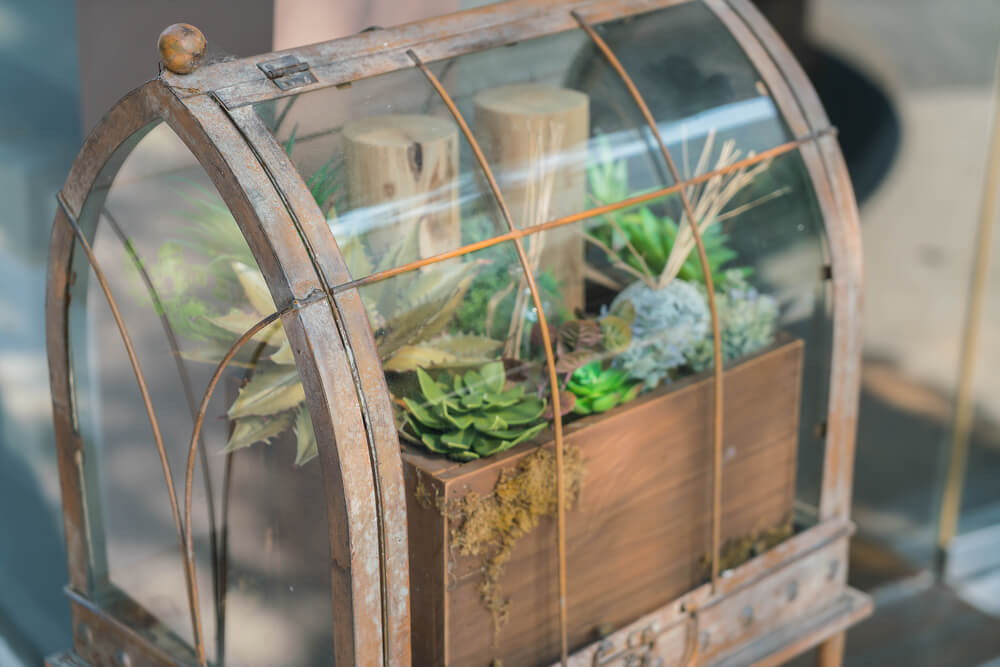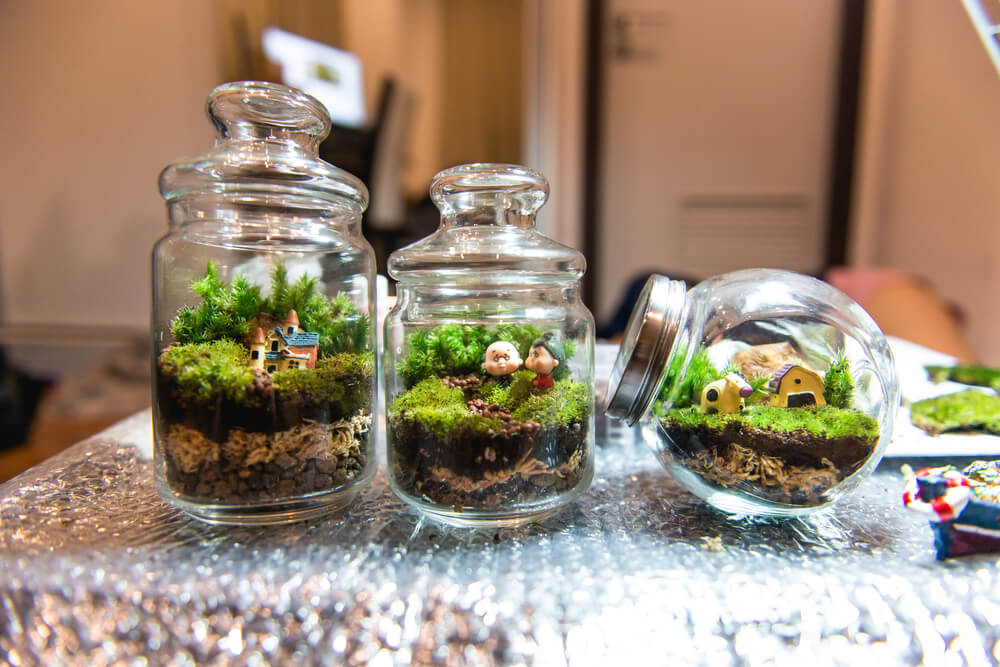Discover Propagators and Mini-Greenhouses

Growing different plant species in propagators and mini-greenhouses is a gardening task, but also a craft. To obtain the best results, you must ensure that everything works together and in collaboration.
Combine basic gardening techniques and care with your favorite plants to create a beautifully balanced green area for your home.
Propagators and mini-greenhouses: discover everything you need to know!

Keep in mind that both of these are transparent containers that can be made of glass or plastic. In different ways, both options will offer you the possibility of having a miniature garden inside your home. How does this sound?
Now let’s look at the things that you should pay attention to. Don’t forget to take notes!
Microclimates
The walls of these containers condense the irrigation water that then, in turn, falls on the ground. It’s a process similar to what happens in nature. Subsequently, water and air are recycled creating a suitable microclimate for growing and sustaining all types of plant species.
Environmental conditions
This natural cycle allows you to maintain high humidity and a constant warm temperature inside the container. These are optimal environmental conditions for growing exotic and tropical plants.
It’s also good to know that delicate plant species and processes including seed germination and propagating cuttings, will appreciate the environment that’s created in propagators and mini-greenhouses.
Propagators and mini-greenhouses: a great little space

Propagators and mini-greenhouses must be voluminous otherwise it could hinder their development if the leaves touch the transparent walls.
When it comes to buying your propagator and mini-greenhouse, make sure that it’s easy to install and fits the place where you want to keep it. Some companies reproduce vintage or vintage models to scale.
They can even be large enough to contain several small pots. If you invest in one of these, you’ll be able to enjoy variegated foliage that’ll give you the sensation of a tropical forest.
Size of species
The plant species that you choose to grow in your propagator and mini-greenhouse shouldn’t be too large. Equally, you should always choose plants that prefer humidity with high and constant temperatures.
Keep in mind that, for each species you decide to grow, you should learn about and choose the right substrate. This is essential for strong and healthy growth.
The ideal plants for propagators and mini-greenhouses

Although they don’t support the growth of large plants, you should choose plants depending on the type and size of your propagator or mini-greenhouse. Pay attention to this so that the plant enjoys optimal, healthy growth.
If the entrance hole on your propagator is at the top and is quite small, the plant should be inserted with the help of a bamboo stick. Or if you can, consider purchasing one with a side hole, which will make it easier for you to plant your plants and perform maintenance tasks more comfortably.
Orchids and ferns are well suited to mini-greenhouses. However, for propagators, we advise that you grow phytonia, small-leaved ivy, miniature African violet for the borders. For the center, try a young chamaedorea or croton.
Propagators and mini-greenhouses: maintenance

One of the main rules for growing plants in these containers is to place them in a bright place, without direct sunlight.
It’s also necessary to frequently open the lid to ventilate the interior. You should maintain the humidity of the substrate through a sprayer and avoid soaking the leaves and flowers directly.
Irrigate according to the needs of each species and don’t forget that the closed environment will maintain the environmental humidity. This will cause the walls of the propagator and mini-greenhouse to appear foggy in the morning. If you notice that it remains like this during the day, aerate it by removing the lid for a while.
Did you enjoy discovering propagators and mini-greenhouses? Get started on yours and create your own miniature garden!